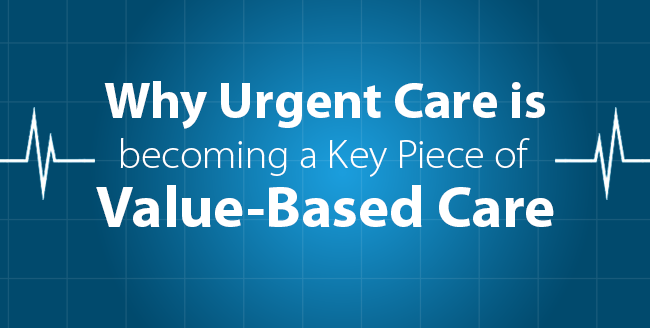Though they’ve been around for decades and have catered to numerous patient needs, until recently, many Americans have not given urgent care the time of day, opting instead for traditional ER visits. But, thanks to a rise in healthcare consumerism and a shift toward value-based care, the urgent care industry is finally “having its day.”
With urgent care centers focusing on providing convenient, quality care at a cost most people can afford, they are certainly giving ERs as well as PCPs a run for their money.
What Has Driven the Growth of the Urgent Care Industry?
Because the Affordable Care Act (ACA) has forced provider organizations to find alternative ways to deliver high-quality, value-based care, while still keeping costs to a minimum, it can be seen as one of the main driving forces behind the growth in the urgent care industry.
Because urgent care centers offer convenience (they’re open longer hours than physician’s offices) and low costs for consumers (urgent care bills are typically far less than ER bills), they can easily fill the gaps in care delivery. In fact, these walk-in centers are becoming a “normal alternative” to routine PCP care. This might explain why, according to the Urgent Care Association of America (UCAOA), there are currently 9,300 urgent care centers across the nation with more opening all the time.
What Value is Urgent Care Centers Adding to the Marketplace?
We’ve already mentioned that urgent care centers offer convenience at a lower cost, but what does this look like to the average consumer?
Urgent care centers provide ER-type of services, which means staff can do things like take X-rays, set broken bones, run tests and drain wounds. Centers also have a full-time physician and nurse on site, and some may also provide nurse practitioners or physician assistants.
And let’s talk about those low costs for a second. A study for the American Institute of Certified Public Accountants conducted by VMG Health found the average cost of a visit to an urgent care clinic to be $80, whereas the average cost of a visit to a primary care physician is $130, and an average visit to a hospital emergency room is a whopping $650.
Urgent Care: One of the Fastest-Growing Segments in Healthcare
Industry experts are projecting the urgent care segment will grow by almost 40%, to $18 billion, by 2017. Though the industry is currently highly-fragmented, numerous private equity firms are acquiring centers across the country. Hospitals and health systems are also starting to snatch up clinics in an attempt to get in on the action. In 2012, Dignity Health acquired U.S. HealthWorks. Payers are also seeing the value urgent care centers offer and investing. Take, for example, the fact that WellPoint has invested in Physicians Immediate Care.
Demand Will Continue
How will urgent care demand develop in local markets? And how will this growth affect changes in emergency room care? Healthcare reform and alternate payment initiatives will no doubt have an impact on the growth rate of this segment, though no one is quite certain as to exactly how. Experts are predicting an additional 26 million
non-elderly” will be insured by 2017 and that the demand for primary care physicians will exceed supply by as much as 53,000. Then there’s also an aging population (we’re talking about you baby boomers) which will contribute to the demand for alternative care options.
Global-Fee Reimbursement
As demand grows for urgent care services, providers must ensure a stable economy for themselves. Currently, most urgent care reimbursement is covered under a flat rate, which is standard for all visits. This is different from reimbursement practices with physicians and hospitals. Profitability of urgent care centers, then, will be determined by case mix and acuity, as well as successful negotiations of global fees.
The Future of Urgent Care Medicine
It should be noted that there are currently 20,000 physicians who are practicing urgent care medicine, and that number is growing. In fact, urgent care medicine is now recognized as an important specialty that represents this quickly-evolving medical field.
Younger physicians who are training in primary care specialties like Internal Medicine, Family medicine, Pediatrics and Emergency Medicine are pursuing additional education in Urgent Care Medicine.
And, as this specialty grows, we can expect to see greater development of training programs geared specifically towards Urgent Care medicine including urgent care clinical rotations.
We can also expect to see more facilities and organizations recognize and accept Board Certification in Urgent Care Medicine and request verification. Many third-party payers and commercial insurance carriers also recognize Urgent Care Accreditation with the American Academy of Urgent Care Medicine. In fact, the Academy’s UCCA program is accepted by groups such as Cigna and Aetna.
Thanks to these accreditations and training programs, and the physicians, nurses, and medical assistants who are choosing to specialize in urgent care, yesterday’s “walk-in” clinic is being elevated to something much more, something that will continue to add value to the healthcare industry for years to come.
Urgent Care EHR & Billing Services

Join the Discussion!